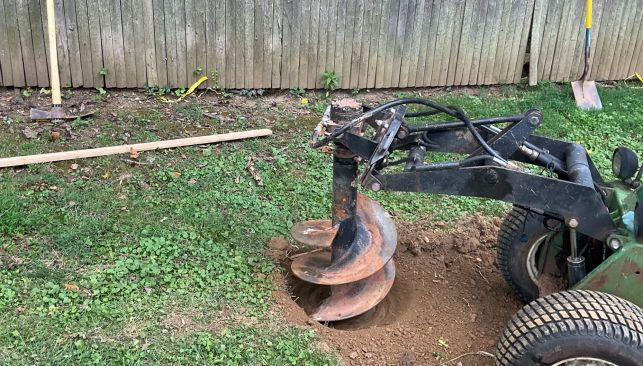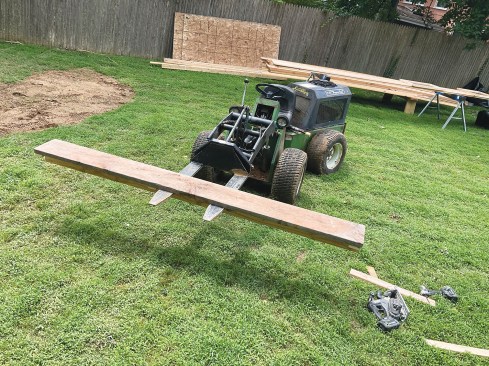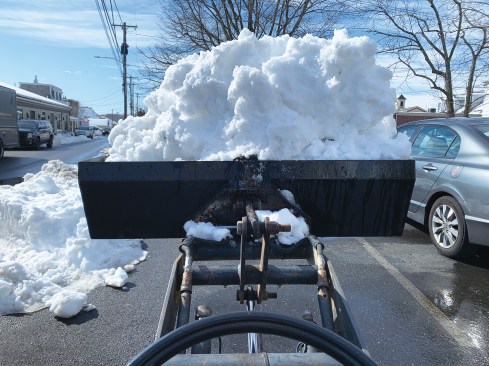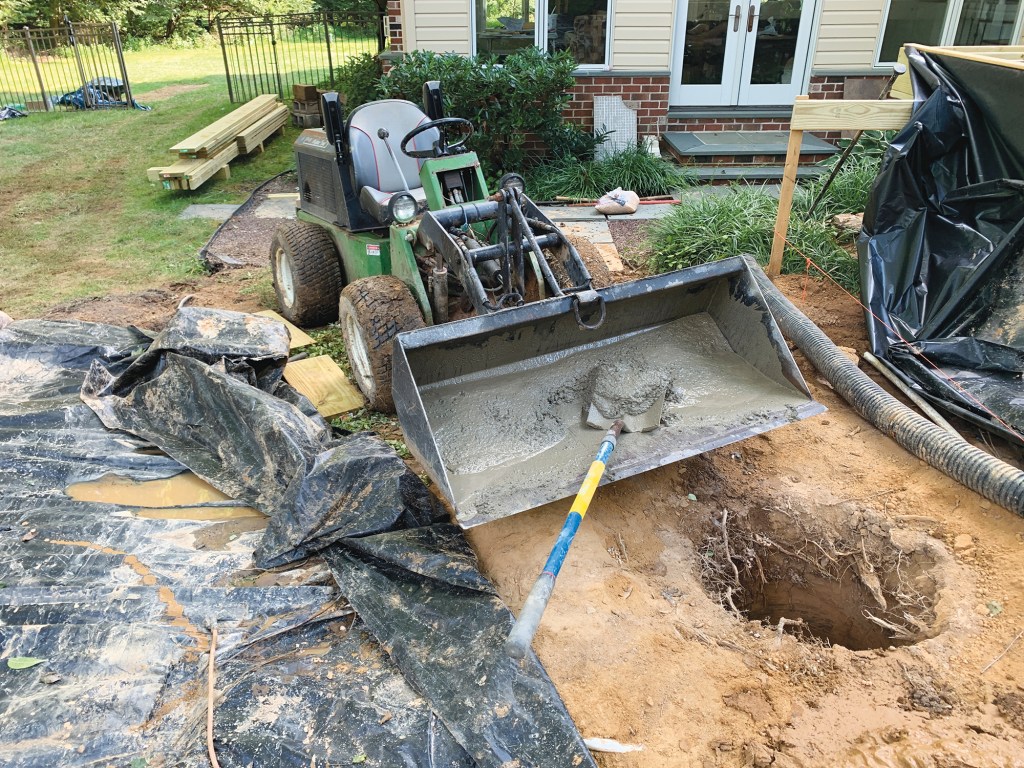The first powered machine I ever operated was a skid steer I found on a jobsite with the key left in it. This was 1980-something, and I was 13 years old. Over the years since, I’ve operated a variety of subcompact loaders, skid steers, and mini-excavators on my jobsites, and while I’m hardly an expert operator, these experiences dosed my plasma with at least a little hydraulic fluid. These days, deck building comprises the majority of my remodeling business’ work, and with the demands of moving material, digging holes, and landscaping associated with it, I decided that owning a machine was an investment in my future. In my search for the unit that would serve me best, I discovered the Power Trac PT425. It turns out that a “tool” I bought to dig holes has opened up heretofore closed business doors for me.
I bought my PT425 used and cheap with 1,700 hours on it. My rental company said its units in the same category, mainly Toro Dingoes—in daily use—had in excess of 3,000 hours. For something that I thought I might use a few hours out of a few days each month, the hours were worth the risk, so I bit down hard and forked over a bunch of cash to a guy behind his garage.
With 4-wheel hydrostatic drive and independent wheel-motors, not to mention some seriously fat “turf tires,” this 1,327-pound unit with a 25-hp Kohler gasoline engine has zero—zero—impact on my customer’s yards. This is not the case with other units in the subcompact loader category. Tracks and zero-turn equipment are murder on a landscape.
All the Power Trac’s wheels move to make wide, sweeping turns—which I can take at full speed over and over again—and its articulating center-pivot frame is fantastic to operate. It’s also nimble. I can snug that puppy in tight places and move around. It takes practice because when you turn the wheel, the whole machine moves in opposing directions, but getting the hang of it isn’t learning how to paint the Mona Lisa either.
Output. One of the 40-plus attachments available from Power Trac is an 18-inch auger, which I use to dig my post holes. Where I build, in metro Philadelphia, the clay might as well already be brick (laced with tree roots and schist), so the ability to penetrate that layer is impressive.

The author uses the Power Trac's 18-inch auger to dig holes for deck footings.
Power Trac lists the lift capacity at 800 pounds, which seems a bit high. Nine bags of concrete and a pallet was a no-fly with the forks I purchased for it, but it handles 600 pounds with no problem. I tossed a few bags off the pallet and moved those bad boys from lumber drop to backyard in no time. I also use it to move lumber, paver stones, and small boulders.

The Power Trac can be also be fitted with forks, and has a lifting capacity of up to 800 pounds.
Versatility. While my sweet spot is decks, my insurance agent calls me when trees are down after a storm. The last downed tree I cut up and hauled away was larger in diameter at the butt than my chain saw bar is long, but with the Power Trac fitted with a dirt bucket, I was able to easily lift the cut-up logs into my dump trailer. With its 5-foot-high lift (make sure to tip the bucket forward a little as you near the top of the lift arc to keep the opening 100% pointed away from you with an unstable load like logs), the Power Trac can lay its bucket flat on the back of the tailgate. While I’m not dumping the logs out, rolling them out of the bucket and into a trailer is easy.
The bucket is ideal for hauling 3/4-inch clean stone from my dump trailer to a backyard, where I put it over landscape fabric under some of my decks to retain or de-mud. It’s great for spreading mulch, too.
Snow. Last year was a big snow season in my area, and I discovered that the Power Trac was the perfect companion to the dump truck and 9-foot blade I use to plow commercially. It’s hard to overstate the power, capacity, and efficiency of clearing driveways with this thing. First, I work during the storm with the plow, but after it stops snowing, the calls come for driveway work. I leave the heavy iron at home and take the digger and bucket. Scoop-run-dump. Scoop-run-dump. The treadle pedal for forward/reverse is in constant motion for hours and awesome to operate in rapid, repetitive work.

The compact and maneuverable Power Trac is ideal for snow removal in driveways and parking lots, though the 48-inch wide bucket is too wide for most sidewalks and walkways.
The Power Trac gobbles up town-plow snowbanks and moves them aside, and can clear mailboxes with 4 feet of packed snow in front of them in minutes. The bucket is too wide, at about 48 inches, for some sidewalks and walks, but it is perfectly sized for driveways big and small, which otherwise would require detail work with a shovel and snow thrower after plowing. With a plow, I have to worry about damaging driveway cobbles or edging, or getting stuck by driving onto the lawn, or damaging the plow itself (I bent two rams in one storm) … no wonder a large number of my driveway clients told me their plow guy quit.
Downsides? There is a portion of the steel frame between the seat and the controls that seems to be a weak point. I had to have mine plated and welded twice. I caught it in time, and it is a design element that’s easy to reinforce before there’s a real problem.
The machine doesn’t have fancy ergonomics, but it’s too good in too many other aspects of the work I do to complain about a lever or switch. Clean it off with a blower or hose after serious work. Grease the Zerks every 10 hours. Make sure the oil isn’t black. Use a fuel treatment. Power Trac doesn’t have a nationwide maintenance fleet, so unless you’re ASE certified, you need a good mechanic. That said, when you call Power Trac maintenance, you get Power Trac maintenance.
Bottom of the hole. The thing I bought to only dig holes has found itself at the center of my business. List price for a new PT425 is $15,900 without attachments. power-trac.com
Photos by Mark Clement.
